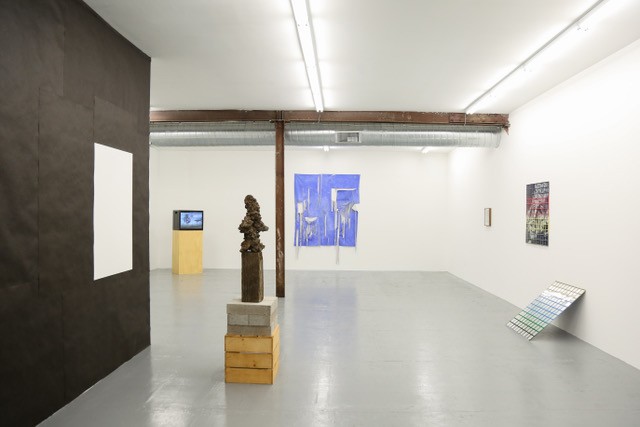McAnally discusses blending facets of art, creating a cultured community

GVL / Courtesy – Paul Wittenbraker
Mar 26, 2018
St. Louis-based artist, curator, critic and editor James McAnally explores the many facets of what he considers to be art. On Monday, March 26, McAnally will be participating in an informal presentation of his work and leading a discussion at Grand Valley State University’s Calder Arts Center starting at 1:40 p.m., as well as leading another discussion at the Avenue for the Arts’ Learning Lab in Grand Rapids on Tuesday, March 27.
McAnally’s visit is organized by the Department of Visual and Media Arts’ (VMA) Visiting Artist Committee and co-sponsored by the Writing and Digital Studies Departments, as well as CulturedGR and Dwelling Place, said Paul Wittenbraker, GVSU visual studies professor. A member of the committee, Wittenbraker said that in picking the guest, a key aspect of McAnally’s professional career that stood out was his connection between artist and community.
“We think of the students who are studying visual and media arts, but we also think of the community,” Wittenbraker said. “We want conversations to be happening amongst our students and our community. … (Through his work), James is exemplifying that in an exciting way.”
McAnally describes the presentation of his work as the “inseparable” aspects of art, writing, editing and curating. Being able to think deeply and critically about art is key for growth, McAnally said, which is why attending these informal presentations add to a grasp of modern culture.
“Contemporary artists are by definition responding to the questions of the present, and many artists–myself included–view their work as a means to address the complex issues of what it means to be alive today,” McAnally said. “Talking with artists in that regard should be enlivening and enriching for whatever field you come from.”
The focus of the first discussion following the artist talk is where writing and criticism overlap in developing culture. For Danny VanZandt, the student moderator for the discussion, while being interested in both art and writing through his work as an art history major, his excitement rests in the fact that McAnally has been able to blend facets of art that are usually discussed in vacuums.
“A big thing about James is that he breaks down that art practice, writing, criticism and curating aren’t as different (as they seem),” VanZandt said. “They’ve always been placed as separate disciplines, but he’s really figured out that they all work in the same way.”
Both the discussion on Monday and the discussion Tuesday on presenting art in the Midwest will feature “lead participants” that will propose key questions pertinent to the artistic communities in Grand Rapids and GVSU, as well as promote an ebb and flow in the conversation, Wittenbraker said.
As opposed to the artist talk, McAnally is especially excited for the discussions as they allow him to learn about communities outside of “art centers” like New York or Los Angeles.
“I’m interested in the dialogue that comes with roundtables, where more complexity comes out than in a lecture,” McAnally said. “Anytime we can open up multiple points of view in conversation, I view that as productive.”
While there is much to learn from the artist talk, the part that both GVSU students and faculty can grow from the most are the subsequent discussions, according to Wittenbraker.
“The discussions are the real substance because during those, we can hear out what (McAnally) is doing, but also reflect upon what we’re doing,” Wittenbraker said. “We can get excited about (art), but also be critical of it.”
Wittenbraker said another goal of McAnally’s visit is to better understand how he is promoting culture in St. Louis and attempt to mimic that in bettering Grand Rapids. Yet, on an individual level, students can mimic McAnally’s mastery of blending many aspects of culture that were formally kept apart, Wittenbraker said.
“I always think about students connecting the dots between what they’re studying in school and why that’s relevant in the world, and both of the discussions are really focused on that question,” Wittenbraker said. “Specifically with an art student, (they may) recognize that they can write or maybe they can involve themselves in criticism and understand that … this is all part of the big picture.”























